Three-lake cichlids refer to cichlid fish distributed in the three major lakes in East Africa - Lake Tanganyika, Lake Malawi and Lake Victoria, with a number of about 700 species. They have always been famous for their colorful appearance. Are you familiar with some of the beautiful three-lake cichlids? Here are the top ten most beautiful three-lake cichlids, including Sai Blue Six, Cleopatra, Blue Jasmine, Godzilla, Emperor Fish, Venus, and Special Blue Zebra. The pleasing appearance makes these three-lake cichlids the focus of people's pursuit. Let us appreciate their unique beauty together.
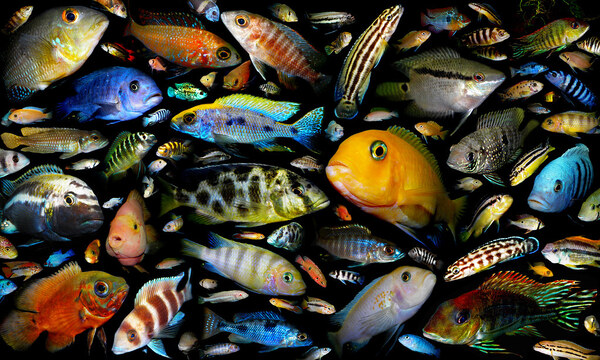
1. Sai Blue Six
Which species of three-lake cichlid is beautiful? The consensus of most fish lovers is Sai Blue Six. This fish originates from the deep waters of the Zaire coast in the north of Lake Tanganyika in Africa. It is the most famous of the more than ten species of six-striped fish in Lake Tanganyika and one of the more precious fish in the world.
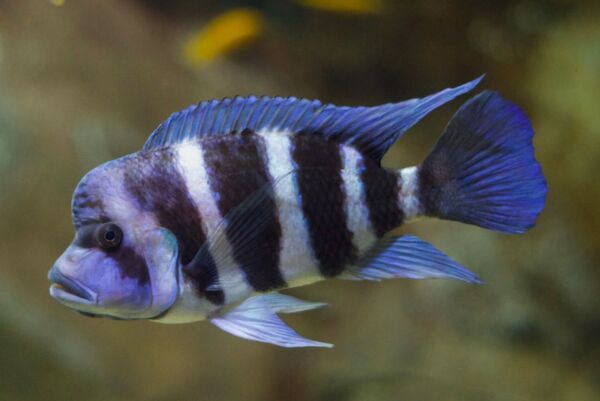
Sailan six-striped fish is famous for its strong contrast between light blue and black, and its lines are particularly clear. Due to its ever-changing colors, strong physique, elegant posture and excellent adaptability to water and soil, it is deeply favored by cichlid enthusiasts. In suitable water quality and environment, Sailan six-striped fish can show amazing beautiful colors, so it is loved by people.
2. Cleopatra

Cleopatra is mainly distributed in Lake Malawi in Africa. Its body characteristics are mainly reflected in a wide and distinct horizontal band on the side. The main color characteristics of this fish are that its sides present a blue background, the head and back present a bright blue, and most of the body is covered with a wide red scale frame; the dorsal fin is blue, the upper edge is fiery red, and the pelvic fin, anal fin and tail fin are completely fiery red. Its eyes are copper-yellow and the pupils are black.
The male fish has a bright red body color and a blue-green head. This contrasting color shows a very beautiful appearance.
3. Blue Jasmine

The editor particularly likes the blue jasmine among the three lake cichlids. This fish is known as the "Blue Dolphin of Lake Malawi" in the European and American markets because of its dolphin-like protruding forehead and the bright cabbage blue color of the whole body. On the sides of the body, it is covered with irregular dark spots, adding a unique charm.
Although originally classified as a member of the genus Haplochromis, the Blue Jasmine is now the only species in the genus Cyrtocara. Since it first entered the market in 1968, the Blue Jasmine has been favored by tropical fish enthusiasts. Its unique appearance and attractive colors make it one of the most popular ornamental fish.
4. Godzilla

Godzilla is a large cichlid fish that can reach about 40 cm in length. Its body is slightly flattened and has a long spindle shape. Its head is long and triangular, with a protruding snout, a wide mouth, and powerful and sharp jaws.
After the adult Godzilla develops color, its body color becomes extremely gorgeous. It usually appears purple-blue or bright blue, and sometimes green. The color of the anal fin ranges from blue to orange-red, while the rear side and tail fin are covered with bright red spots, and there are bright white egg spots on the anal fin. It exudes a very wild appearance, coupled with stunning and gorgeous body color, these characteristics have even earned it the reputation of "the crown of Lake Malawi".
5. Emperor fish
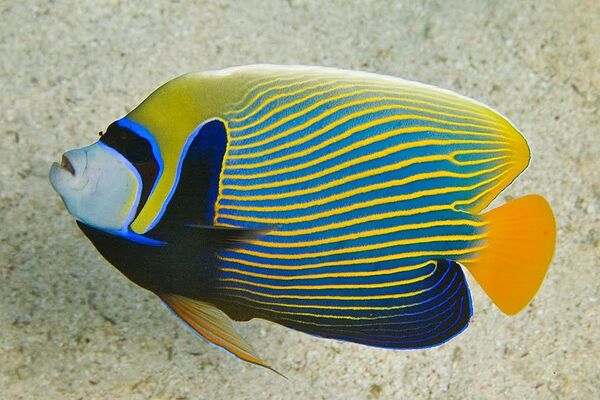
Which three-lake cichlid fish is the most charming? The emperor fish has always attracted attention and is popular because of the beautiful patterns on its body. The body patterns of this fish will change unpredictably as it grows. The young emperor fish has a green body with spiral patterns.
However, when the emperor fish gradually grows to about 23 cm, the white spiral patterns on its body will turn into more than a dozen yellow vertical lines. When it "puts on a yellow robe", the adult fish looks like a monarch, which is why it is called the emperor fish. The eye-catching yellow stripes show majesty and luxury, making people feel the presence of His Majesty the Emperor.
6. Venus
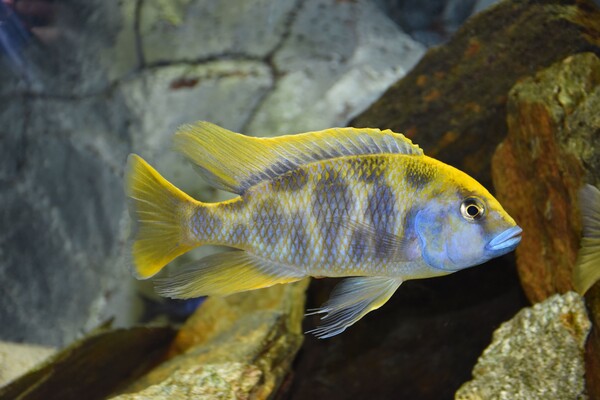
The Venus commonly seen in aquariums are usually small individuals, and they are called Kaligono in Lake Malawi, which means "sleeper". The body color of female Venus often shows yellow and brown patterns, while the face of male Venus is blue and the body is yellow-brown.
However, not all individuals are like this. Some Venus show blue bodies, and both females and males have camouflage-like patterns on their bodies. Overall, Venus is a very gorgeous and charming fish, which is pleasing to the eye both in appearance and color.
7. Blue Zebra

Blue zebras show very striking dark blue and space blue colors. Both males and females have this eye-catching and beautiful color. Due to its high ornamental value, blue zebras have been widely bred in Europe and the United States.
Blue zebras like to chase each other, so if you put several blue zebras in the same fish tank, you will definitely often see them playing and fighting in the water. Reminder: Blue zebras mainly feed on plankton on the water surface, so it is best to provide some meat when feeding to ensure their health and vitality.
8. Blood Red
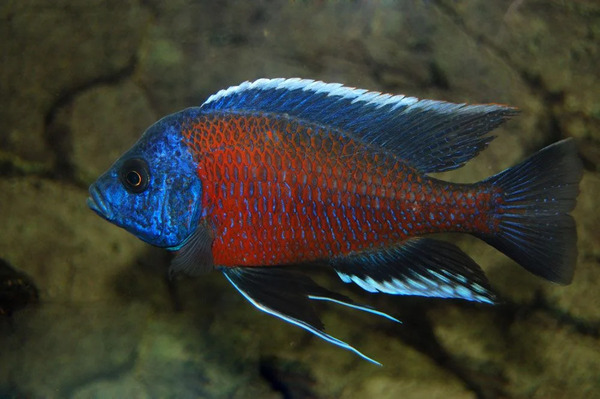
The Blood Red is about 10-15 cm long and oval in shape. Its head and gill cover are light blue with blue patterns, while its scales are bright red with white edges. The surface of its body emits a ruby-like shimmer, with black and red patterns on the pelvic and anal fins, and a white lace on the dorsal fin. In particular, the male fish has an electric blue head and a purple-red body, creating a clear contrast effect, making it look very beautiful and unique.
The Blood Red is gentle in nature and generally does not bully other small fish. They are omnivorous animals, so they are relatively easy to raise.
9. African Phoenix
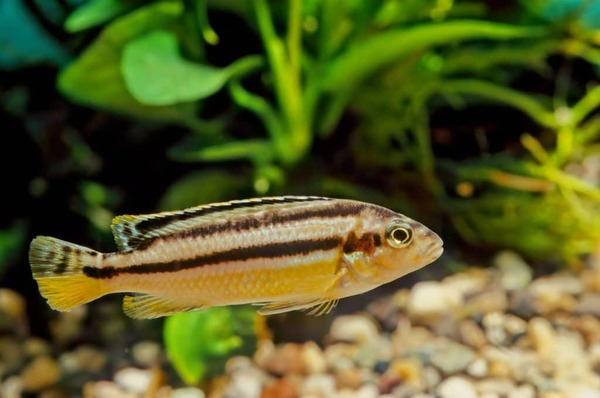
African Phoenix, native to Lake Malawi, can reach a body length of about 15 cm in adult form. The juvenile is bright yellow, with two black stripes on the front half extending from the head to the tail fin. As an adult, the female fish retains this body color, while the male fish turns dark blue-black, with a metallic light blue stripe on the side of the body extending from the rear edge of the gill cover to the end of the tail.
African Phoenix is very unique in its living habits. They can only survive in hard water with a high alkalinity (pH 7.5-8), and the suitable water temperature range is between 22℃ and 26℃. [Special reminder] Please note when purchasing, this fish has a strong sense of territory, and male fish often fight fiercely, so adult fish should be kept alone to avoid conflicts.
10. Sun Peacock
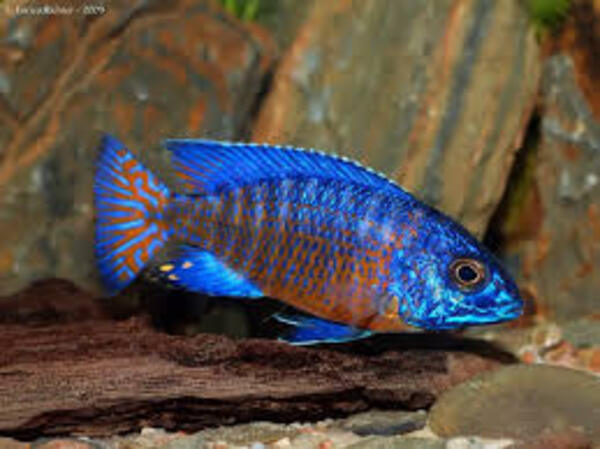
Sun Peacocks mainly live in the transition zone between rocks and sand at the bottom of lakes. Adults, sub-adults and females often swim alone or in small groups. In these small groups, you can often see very colorful males with full colors, which show their protection and vigilance of their territory. Sun Peacocks usually feed on small invertebrates in sand or lake bottom deposits.
animal tags:
We created this article in conjunction with AI technology, then made sure it was fact-checked and edited by a Animals Top editor.